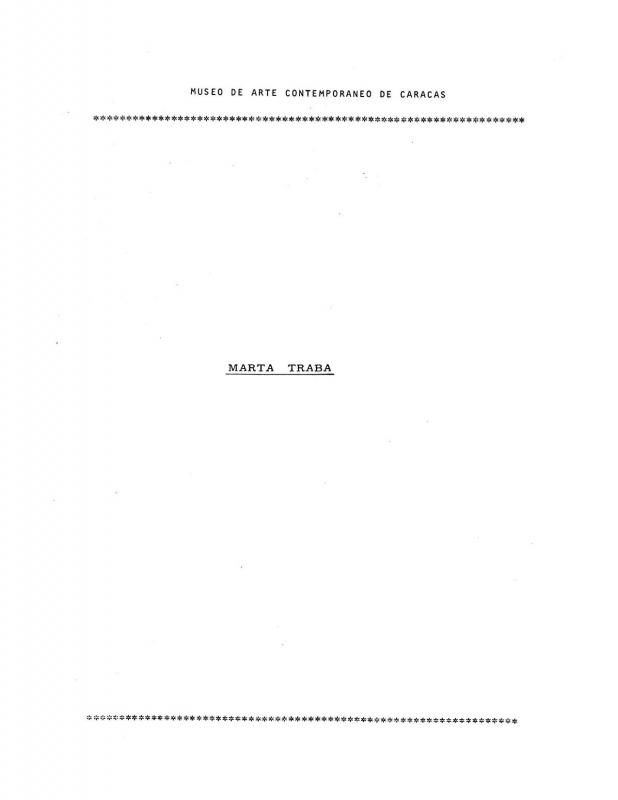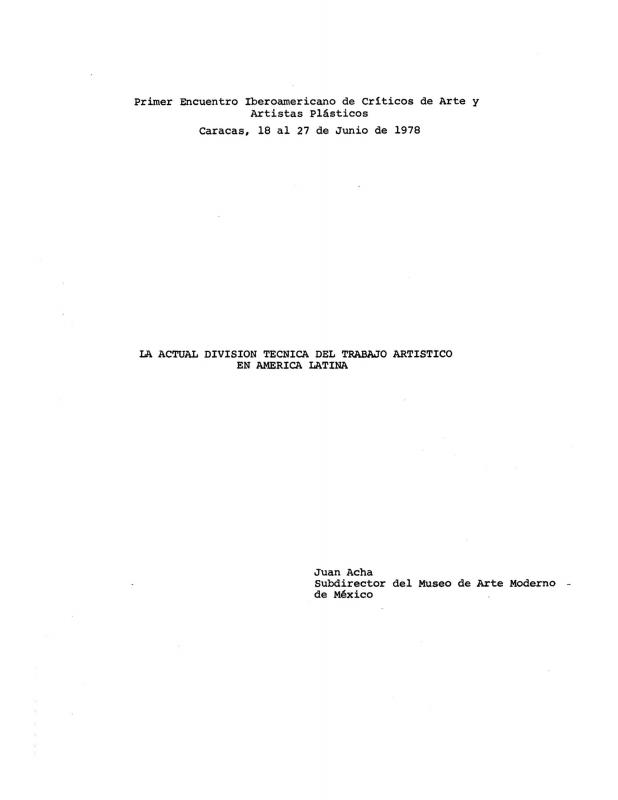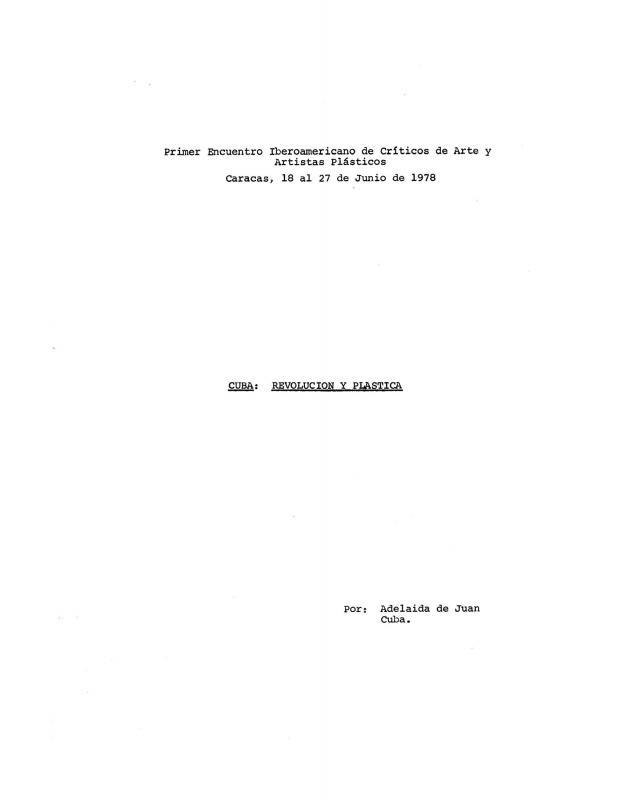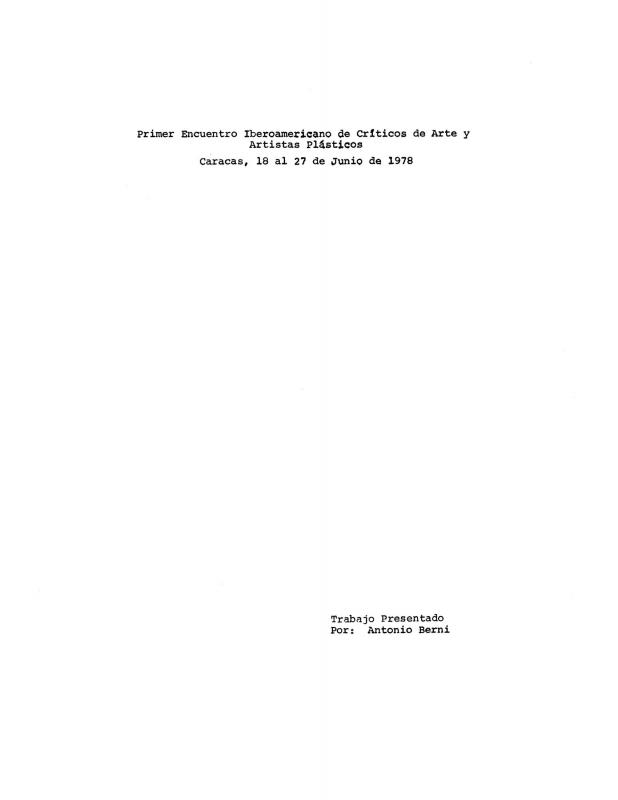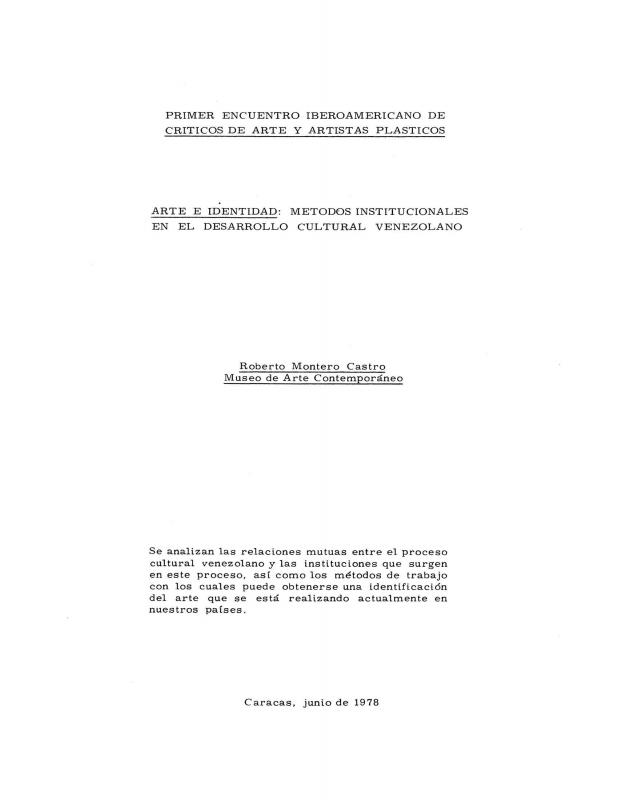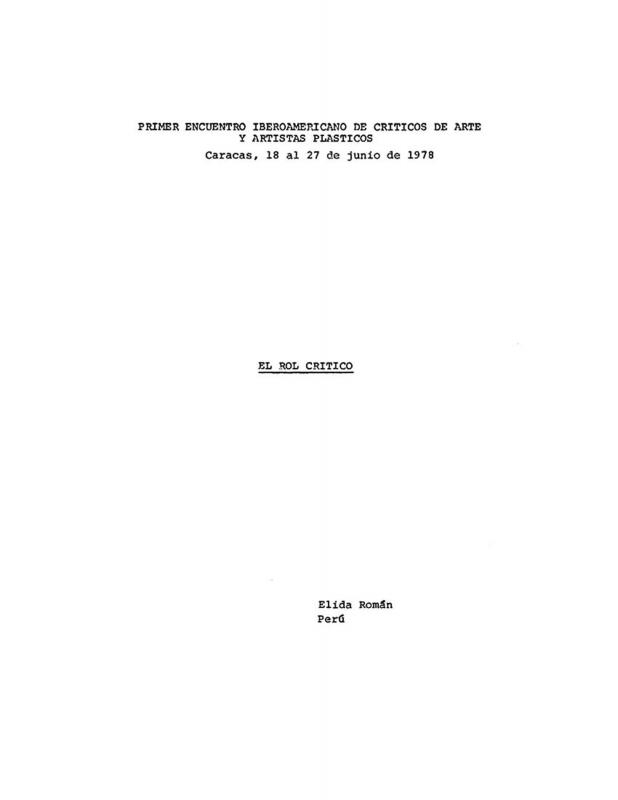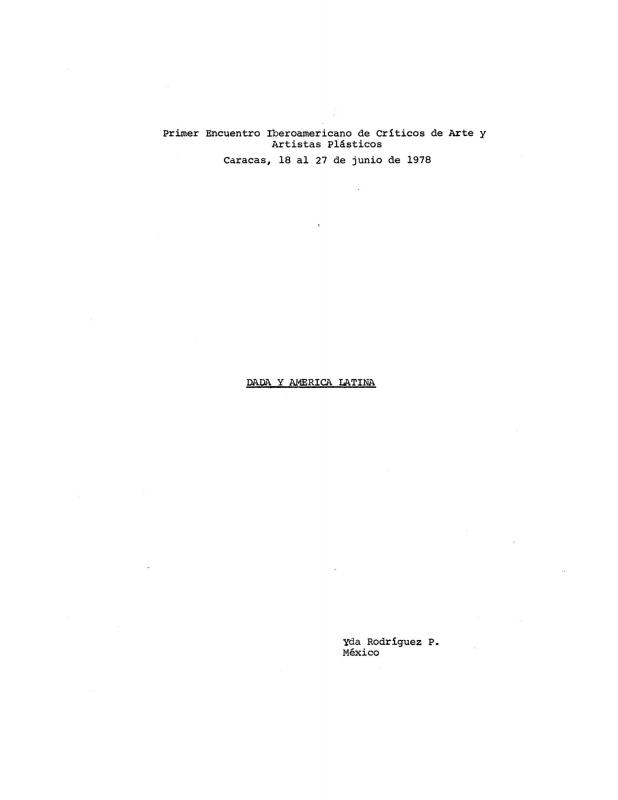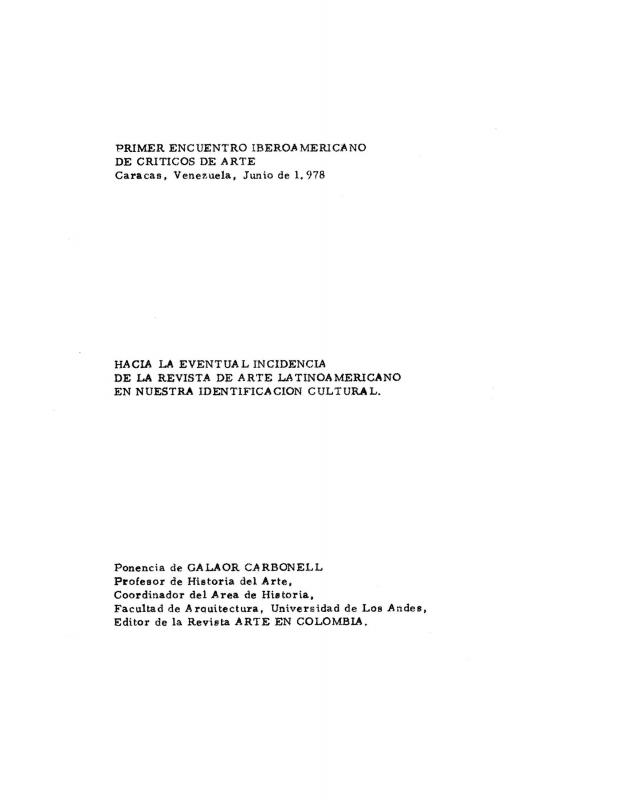This lecture is important because here the Spanish historian Carlos Areán (b. 1921) draws on the strict discipline of his field to explore the question of identity—an extremely common subject in discussions of Latin American art—from the perspective of his academic experience. Areán does not confine his remarks solely to the realm of art, but talks about Latin American countries in terms of their roles as variations and sub-variations on the theme of western culture. He also submits and explains original ideas that are still relevant to this day. His ideas differ from some of the mythologies or concepts that have been accepted in theoretical terms and by the critics; for example, Areán states that he does not agree with the establishment of “permanent assumptions” to define a culture or identity. Despite his assertion that “history is a work in progress, with no final version in sight,” his predictions for Latin America ring true when he says that: “(…) Latin America must keep in mind that the road to the future of the world quite possibly runs through its lands (…). Art can play a sizeable role along the way.”
The Primer Encuentro Iberoamericano de Críticos de Arte y Artistas Plásticos took place in 1978, at the Museo de Bellas Artes in Caracas. In addition to Carlos Areán, other important figures in the fields of art criticism and art itself were at the event, including Jorge Alberto Manrique, Marta Traba (see “La tradición de lo nacional” [doc. no. 815744]), Juan Acha (“La actual división técnica del trabajo artístico en América Latina” [doc. no. 815489]), Julio Le Parc (“Interrogantes” [doc. no. 815575]), Adelaida de Juan (“Cuba: revolución y plástica” [doc. no. 815544]), Carlos Rodríguez Saavedra, Jacqueline Barnitz, Berta Taracena (“Elementos constantes en el arte iberoamericano” [doc. no. 815558]), Antonio Berni (“No puedo dejar de destacar la importancia de este encuentro” [doc. no. 815659]), Roberto Montero Castro (“Arte e identidad: métodos institucionales en el desarrollo cultural venezolano” [doc. no. 815631]), Marco Miliani, Alirio Rodríguez, Jorge Glusberg (“Aproximación metodológica para una comprensión de la retórica del arte latinoamericano” [doc. no. 815475]), Élida Román (“El rol del crítico” [doc. no. 815617]), Ida Rodríguez Prampolini (“Dadá y América Latina” [doc. no. 815758]), Galaor Carbonell (“Hacia la eventual incidencia de la revista de arte latinoamericano en nuestra identificación” [doc. no. 815603]), Roberto Pontual, and Aracy A. Amaral.
The “Austin Symposium” was an important forerunner to this event. The Symposium was organized by Damián C. Bayón and held at the University of Texas at Austin in late October 1975. Many of the participants at the 1978 Encuentro had attended the Austin Symposium, which led to much discussion on the shared experience. Bayón later published a book about the Austin Symposium: El artista latinoamericano y su identidad (Caracas: Monte Ávila Editores, Colección Estudios, 1977; 150 pp. illustrated in black & white).
It is important to note that the lectures delivered at the Museo de Bellas Artes in 1978 had not been published at that point, though some were subsequently included in monographs or anthologies. They therefore possess great documentary value as primary source material.

